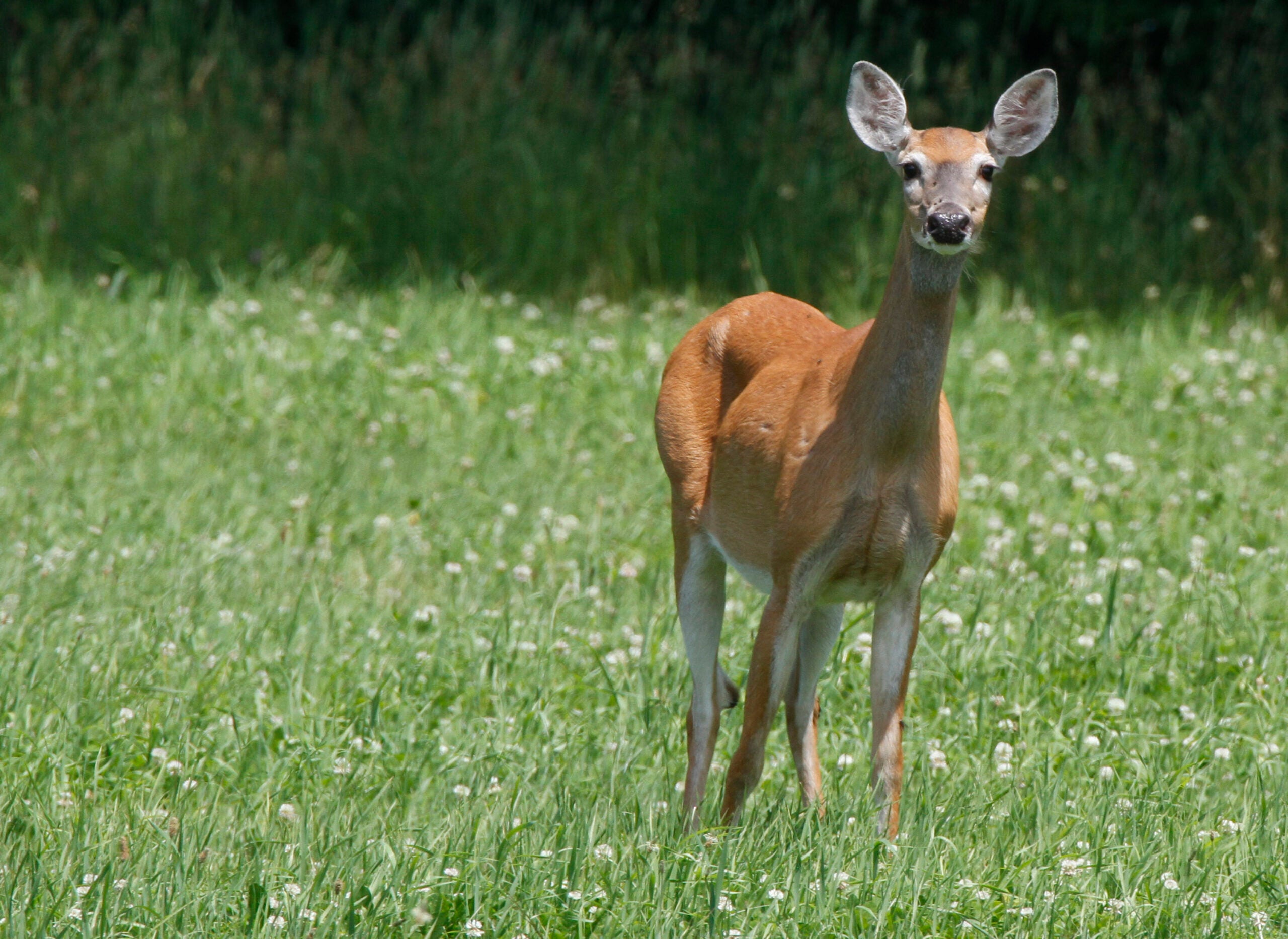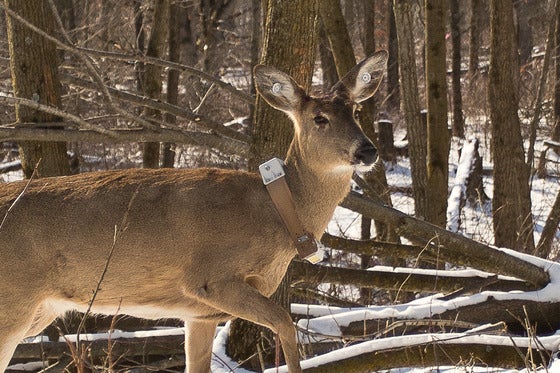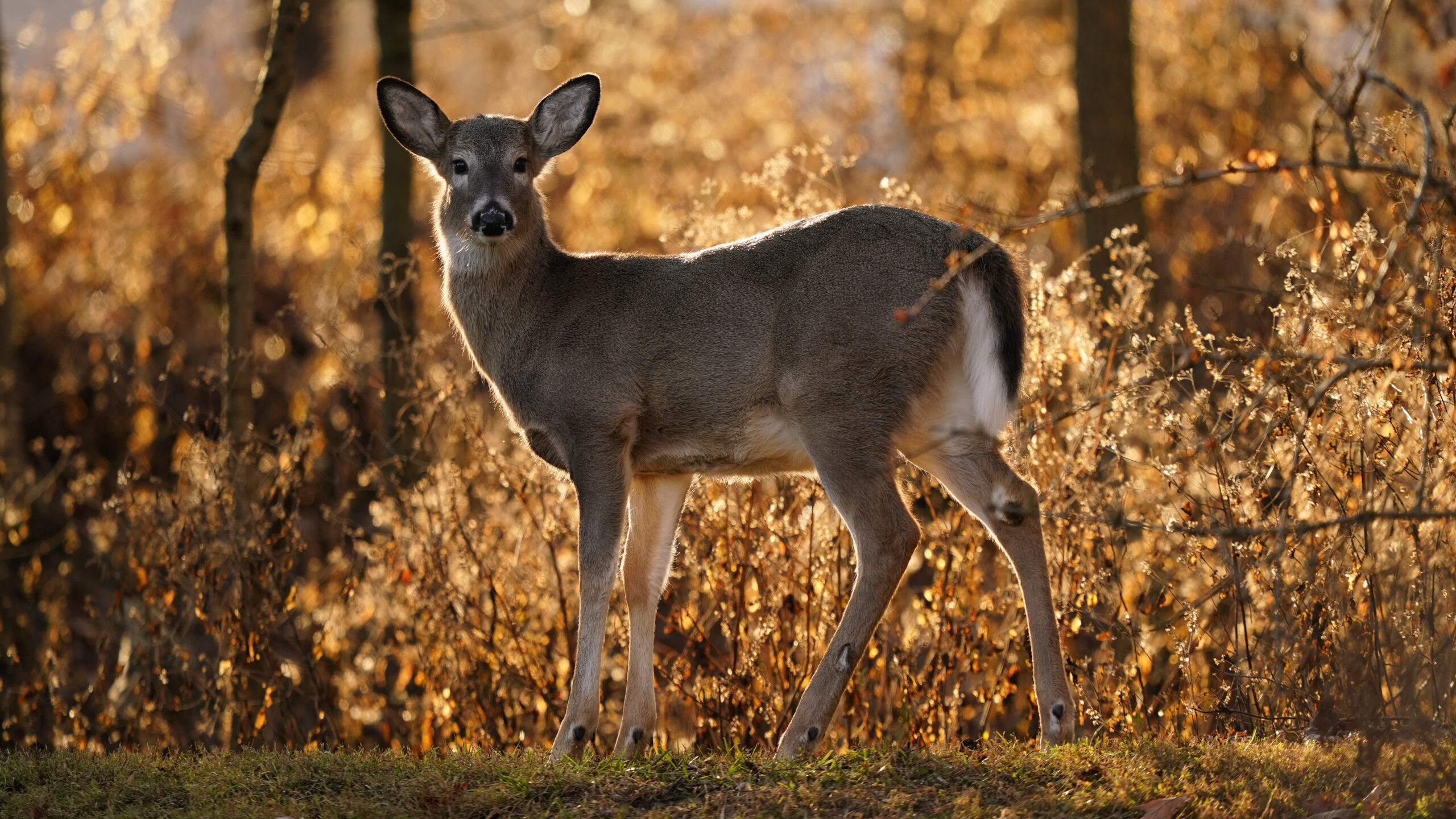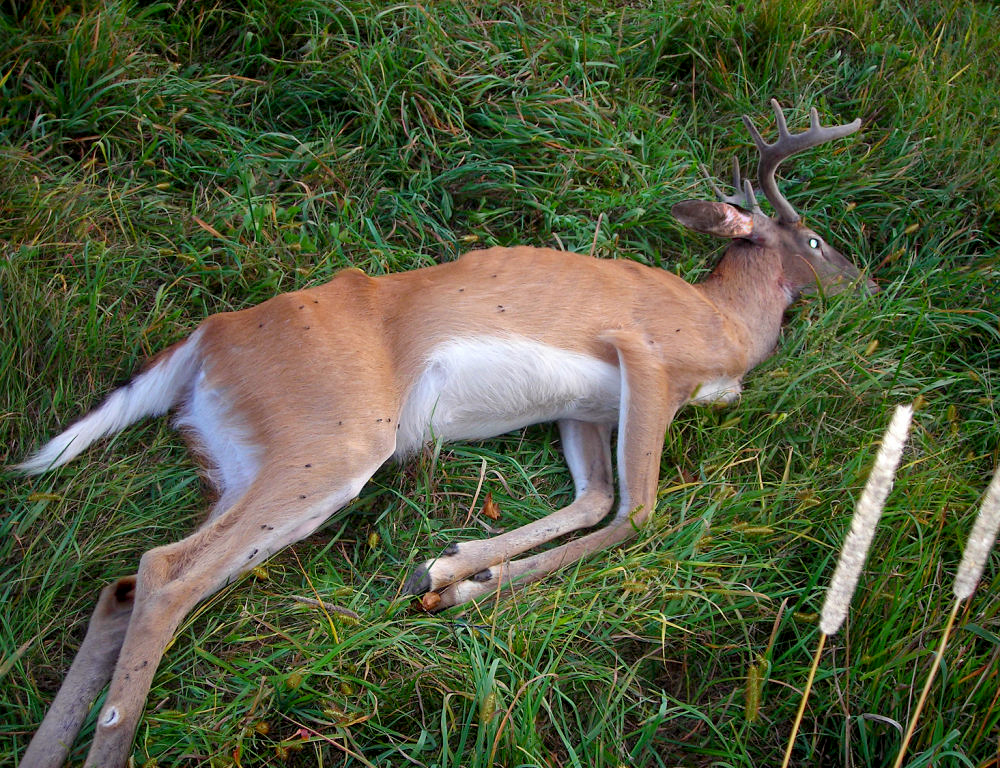A new study is shedding light on how chronic wasting disease is spreading through Wisconsin.
The study from the U.S. Geological Survey looked at CWD data from 2002 to 2014 and developed more accurate disease modeling system to forecast how the fatal brain disease may advance through in an area of southwestern Wisconsin near the Wisconsin River.

This map shows the distribution of chronic wasting disease in North America as of March 2017. Public domain
Stay informed on the latest news
Sign up for WPR’s email newsletter.
Researchers found several factors linked to the disease’s spread, said Katherine Richgels, applied wildlife health research branch chief for the National Wildlife Health Center.
“CWD seems to be moving in association with some of our landscape features,” Richgels said. “It’s more likely to move through denser forests, and it seems to be blocked to some degree by the river corridor, moving fast along the one side but not crossing it.”
The study found CWD spread twice as fast in those areas compared to other types, such as agricultural swatches.
But Richgels said the disease, which has been found in 43 of Wisconsin’s 72 counties since the first confirmed cases in 2002, remains a threat throughout the state.
She said hunters should consider having their deer tested for the disease.
Researchers are hopeful the forecasting model they developed for CWD may also be useful in tracking the spread of diseases in other wildlife, such as white nose syndrome in bats.
Wisconsin Public Radio, © Copyright 2025, Board of Regents of the University of Wisconsin System and Wisconsin Educational Communications Board.





